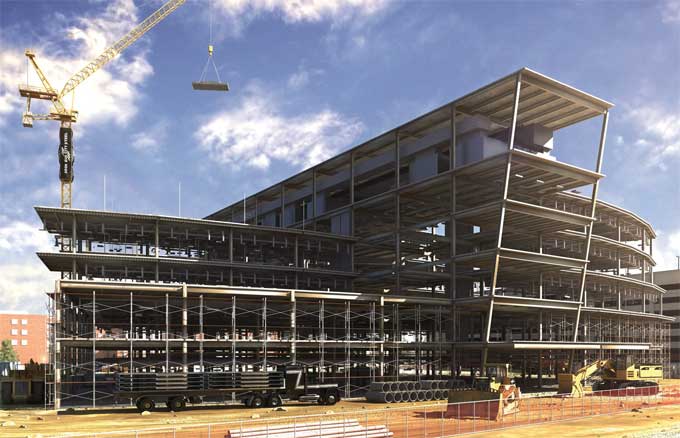Investing in BIM will continue to increase
Tweet
BIM helps those working in the construction business see how a project progresses before and throughout construction, improving design quality.
With many problems caused by cost-effectiveness and efficiency problems, major problems continue to arise in the construction industry; thus, the rise of building information modelling (BIM) is used as a very important tool to reach these goals and tackle any problem that arises.
BIM is a shared database containing information about both the physical and functional aspects of a facility. Computer-aided design (CAD) has been a tool for architects and for builders for many years; BIM, on the other hand, gathers information about design, functionality, and life span to be shared among project participants.
Uses of BIM
Using BIM, designers, contractors, and suppliers can view the progress of the building project and make decisions about design and specification both before and during execution. 3D representation is a key component of BIM.
This may be expanded to 4D, which adds time periods, and 5D, which also covers cost management.
As part of BIM Level 2, which is required in a number of countries, including the UK, for public procurement contracts, each design team member must develop building information in a collaborative 3D environment, which may also include cost data or modelling data. All project participants should be able to transmit information.
The BIM Level 3 aims for full collaboration between all disciplines thanks to sharing a single project model in a centralized repository.
All parties will have access to that same model and can modify it, thereby removing the last layer of conflicting information.
Various advanced economies have implemented BIM, with the US, Japan, South Korea, Germany, France, Brazil, Canada, Australia, and New Zealand recording significant uptake, partly because governments mandate it for public projects.
In a recent survey by GlobalData, 54% of respondents said they had already invested and planned to invest more in BIM, while 19% said they had not yet made any investments but planned to in the next two years.
The widespread adoption of BIM technology in recent years is due to both the mandatory nature of BIM technology in some countries and the efficiency gains that come with it. The use of BIM Technology allows the construction effects to be minimized, thus decreasing the cost while also improving the total efficiency of the construction process.
As BIM gives users the ability to precisely assess the designs before starting the construction, which impacts the design process and improves the quality of the overall construction project management and, as a result, helps in achieving customer satisfaction.
For Example, the clients can digitally view all the illustrations pre-rendered of the project that the client has desired to see; as 3D illustrations are easy to understand and can be seen throughout, it is the perfect choice for the designers to show it to the client.
Thus, clients can request changes and modifications without having to discuss the design process, increasing the efficiency of the design process and the likelihood that the client will be satisfied with the end result.
Conclusion
BIM (Building Information Modelling) has now become a necessity in construction; as a result, understanding the various BIM competence stages is for all AEC-related organizations and companies.
To get online demonstration, watch the following video tutorial.
Video Source: VEERUM
BIM services are a cutting edge technology for building, 3D modelling tools, scan to BIM services, and many more. This allows companies to streamline digital changes and to provide more competition in the industry. So it is a great option in investing in cutting-edge technologies like BIM.
The importance of BIM technology will only increase as large-scale construction projects continue to grow in size and complexity. As a result, Investing in BIM will also continue to increase.

Gallery
Feel free to contact us for BIM requirements. One of our representative will respond you within 24 Hours. Send us your projects requirement today and grow your project.
Explore More !







